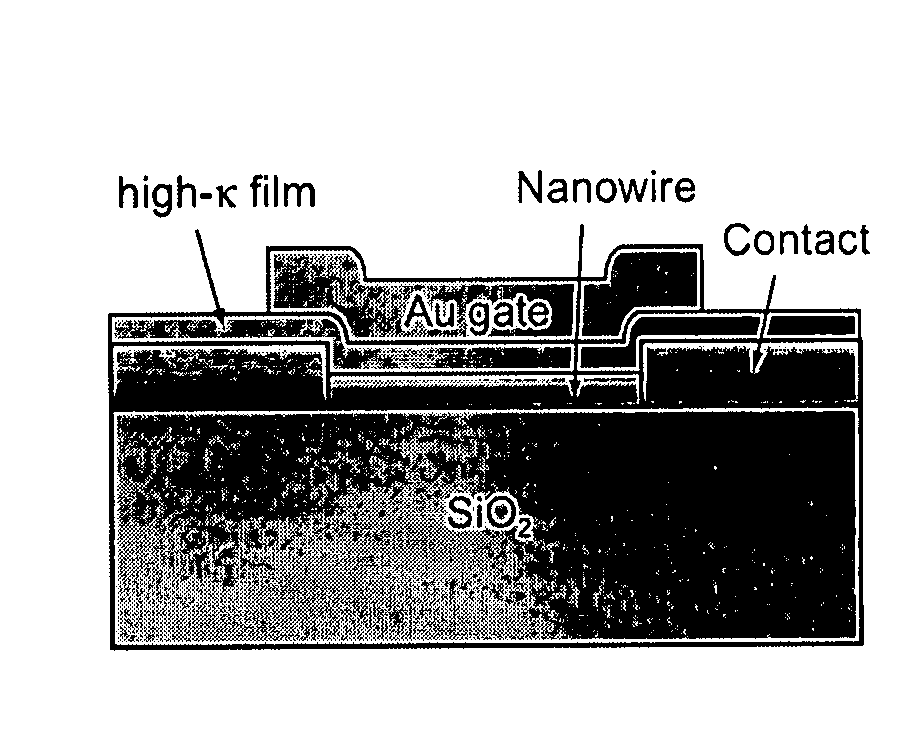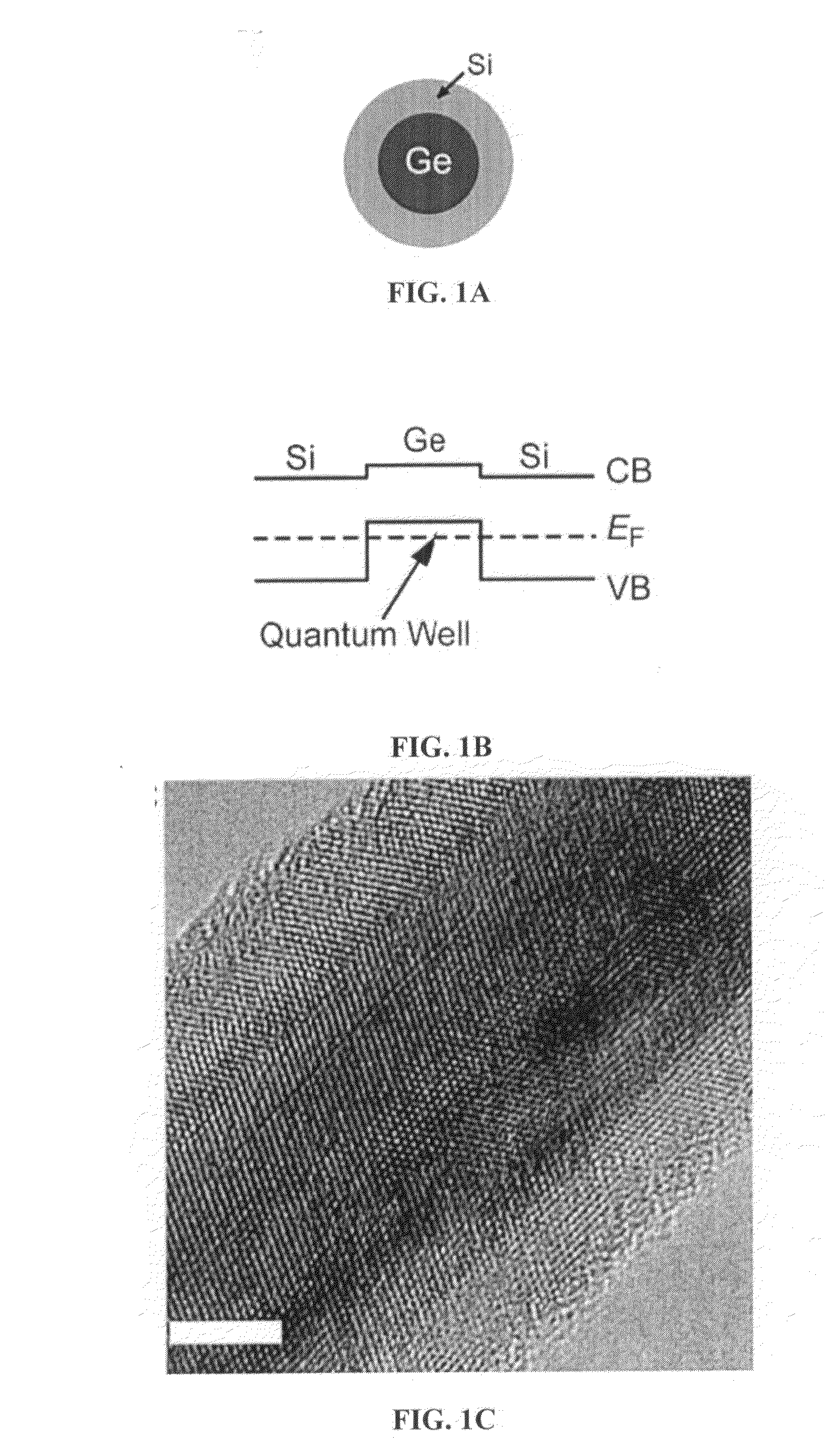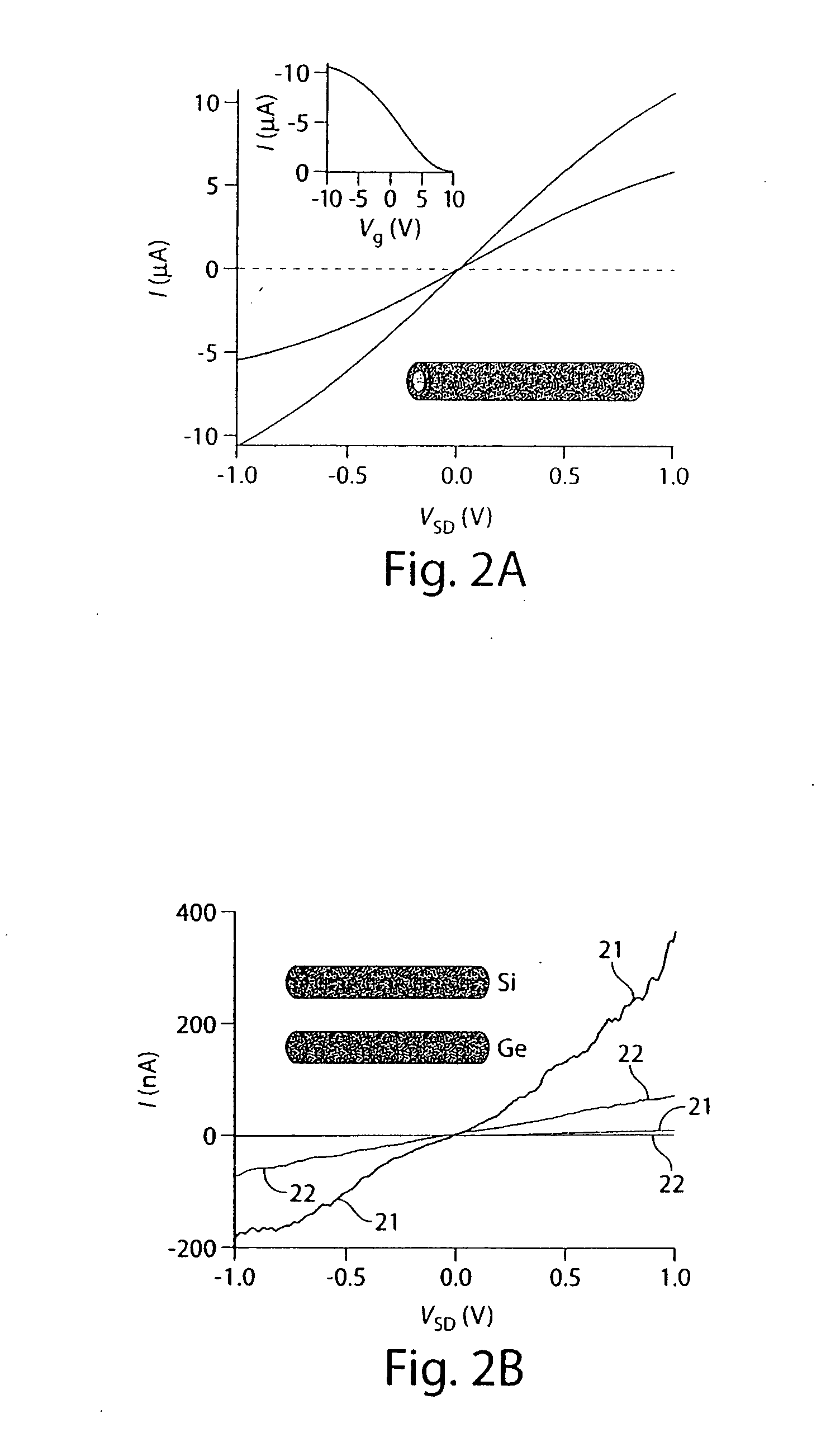Nanowire heterostructures
a nanowire and heterostructure technology, applied in the field of nanowire heterostructures, can solve the problems of inhibiting the conductance or transconductance measurement of the nanowire, and affecting the performance of the nanowir
- Summary
- Abstract
- Description
- Claims
- Application Information
AI Technical Summary
Problems solved by technology
Method used
Image
Examples
example 1
[0085]Two-dimensional electron and hole gas systems, enabled through band structure design and epitaxial growth on planar substrates, have served as key platforms for fundamental condensed matter research and high performance devices. The analogous development of one-dimensional (1D) electron or hole gas systems through controlled growth on 1D nanostructure substrates, which could open up opportunities beyond existing carbon nanotube and nanowire systems, has not been realized. This example illustrates the synthesis and transport of a 1D hole gas system based on a free-standing germanium / silicon (Ge / Si) core / shell nanowire heterostructure. Room temperature electrical transport measurements showed hole accumulation in undoped Ge / Si nanowire heterostructures, in contrast to control experiments on single component nanowires. Low-temperature studies showed controlled Coulomb blockade oscillations when the Si shell served as a tunnel barrier to the hole gas in the Ge channel. Transparent...
example 2
[0107]Silicon and germanium nanowires have been the focus of recent studies of one-dimensional (1D) FETs. However, metal contacts to single-component nanowires generally produce Schottky barriers that limit device performance, and moreover, scattering from charged dopants can also reduce the intrinsic mobility of these nanowire devices. In contrast, various aspects of the present invention show transparent contacts and low-bias ballistic transport in undoped Ge / Si core / shell nanowire heterostructures (FIGS. 7A and 7B; see also Example 1), with an estimated scattering mean free path of ˜500 nm. As will be shown in this example, the 1D sub-band spacing in the typical 15-nm core Ge / Si nanowires determined through both experimental measurements and theoretical calculations was ˜25 meV, and thus at room temperature several sub-bands may participate in NWFET transport. While the Ge / Si nanowire devices need not strictly be 1D, the limited number of conduction channels and clean material st...
PUM
| Property | Measurement | Unit |
|---|---|---|
| width | aaaaa | aaaaa |
| width | aaaaa | aaaaa |
| width | aaaaa | aaaaa |
Abstract
Description
Claims
Application Information
 Login to View More
Login to View More - R&D
- Intellectual Property
- Life Sciences
- Materials
- Tech Scout
- Unparalleled Data Quality
- Higher Quality Content
- 60% Fewer Hallucinations
Browse by: Latest US Patents, China's latest patents, Technical Efficacy Thesaurus, Application Domain, Technology Topic, Popular Technical Reports.
© 2025 PatSnap. All rights reserved.Legal|Privacy policy|Modern Slavery Act Transparency Statement|Sitemap|About US| Contact US: help@patsnap.com



